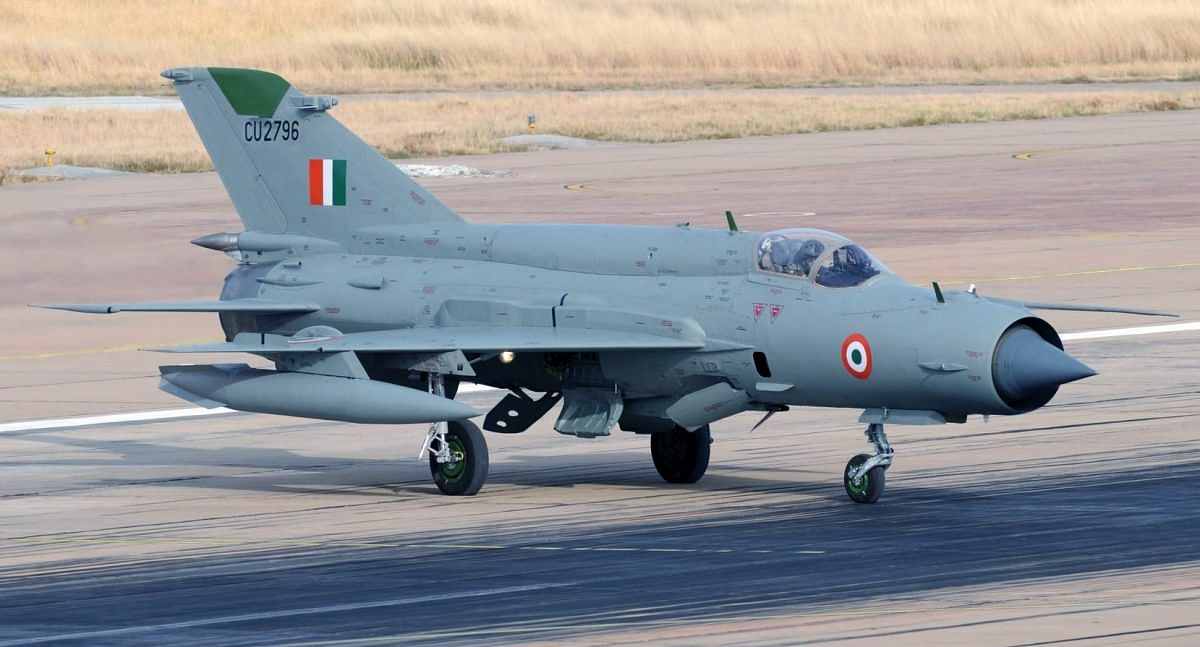SOURCE: AFI
)
The Mikoyan-Gurevich MiG-21, fondly nicknamed “Fishbed” by NATO, has been a mainstay fighter jet of the Indian Air Force (IAF) for over six decades. It holds a unique place in Indian aviation history, playing a pivotal role in numerous conflicts and serving as a reliable workhorse for the IAF.
This article delves into the variants of the MiG-21 in the IAF’s service, its operational history, and its remarkable kill records.
The IAF has operated several variants of the MiG-21 throughout its service:

MiG-21FL: The first variant inducted in 1963, primarily used for reconnaissance and ground attack roles. the MiG-21FL played a crucial role in bolstering India’s aerial defense capabilities during its initial years of service. Played no limited role in 1965 war due to limited numbers.

MiG-21M: Introduced in the early 1970s, the MiG-21M featured improved avionics and weaponry, enhancing its combat effectiveness in air-to-air and air-to-ground missions. MiG-21M Came with Upgraded variant with improved radar and weapons capabilities. 158 M variants were manufactured by HAL and around 65 came from Soviet Union.

MiG-21MF: Further improvements, including a more powerful R-11F2S-300 turbojet engine and better air-to-air combat potential.

Mig-21FL: The MiG-21FL was the first of four major variants to serve with the IAF. Inducted into the force in early 1963 at a time when Pakistan was building bridges with the US to receive Lockheed Martin F-104 Starfighter jets, the MiG-21 FL turned out to be the deciding factor in the 1971 India-Pakistan war that led to Bangladesh’s freedom. MiG-21 FL had confirmed kills against F-104 with Zero loss to the F-104. According to one Western military analyst, the MiG-21FLs had clearly “won” the much anticipated air combat between the MiG-21FL and the F-104A Starfighter. Mig-21FL was withdrawn in January 2014.

MiG-21bis: The most advanced variant, featuring a fire-control radar, afterburning engine, and enhanced maneuverability. Notably upgraded by HAL as the “Bison” variant. A significant upgrade program undertaken by the IAF, the MiG-21Bison incorporated modern avionics, radar systems, and weaponry, ensuring the continued relevance of the aging platform well into the 21st century.
Kill Records:
The MiG-21 holds an impressive kill record in the service of the Indian Air Force, with numerous confirmed victories against enemy aircraft in various conflicts. During the 1971 Indo-Pakistani War, MiG-21 pilots achieved notable successes against Pakistani Air Force (PAF) aircraft, including the destruction of enemy fighters and bombers. Similarly, in the Kargil conflict of 1999, MiG-21s played a crucial role in neutralizing Pakistani intruders and providing close air support to ground forces.
Indian Air Force MiG-21 shot down a Pakistan Navy Dassault Atlantique over the Rann of Kutch (August 10, 1999). In 2019, IAF has claimed that MiG-21bis had shootdown an Pakistani F-16.
Accidents:
As per available government data, close to 500 MiG-21s have crashed in the last 60 years, killing over 170 pilots. More than 20 aircraft have crashed since 2010. Successive reports have held that “human errors (pilots/technical crew)” and “technical defects” are responsible for around 90% of the crashes, with “bird strikes” and other reasons making up the rest.
Retirement
The Indian Air Force aims to completely phase out the MiG-21 by the year 2025. This signifies the end of an era for the “Fishbed,” but its legacy of service and the valuable experience it provided to generations of IAF pilots will remain etched in Indian aviation history.
The MiG-21 has served as the backbone of the IAF’s fighter fleet for over five decades, participating in numerous conflicts and operations. From the Indo-Pakistani wars of 1965 and 1971 to the Kargil conflict in 1999, the MiG-21 has been instrumental in defending Indian airspace and conducting precision strikes against enemy targets. Its agility, speed, and versatility have made it a formidable adversary in aerial combat scenarios.